#gnostic academy of chicago
Text

Spiritual discipline is what awakens us to divine reality, not belief.
Gnosis signifies knowledge from experience. Gnosticism, as a field of study, pertains to all the ancient schools of mysteries from both East and West, whose scriptures encompass the practical science of awakening consciousness. Gnosis is not isolated to the first Christians, but permeates all times, cultures, and spaces, for while consciousness is universal, the means of expressing such experiential wisdom of the divine is temporal and idiosyncratic to the language, mentality, and needs of a particular society.
Gnosis is what we have verified through experience and experimentation, predicated upon practical methods and personal effort. It is never the product of a belief system, of adopting a religious or mystical attitude, demeanor, or behavior. It is never achieved through attendance, adherence to, or acceptance from a group, by believing in doctrine or creed. It is the flowering and natural unfolding of the soul, which is created and developed when the proper causes and conditions have been met.
Just as there are laws that govern the physical universe, so too are there spiritual laws, causes, and methods to originate the soul: the awakening of the consciousness.
Therefore, the Greek term γνῶσις gnosis is synonymous with genuine faith. Faith has nothing to do with belief, with accepting or rejecting a concept in the mind or upholding a sentiment in the heart. Faith is what we know from facts, from witnessing and understanding reality. Belief takes no effort to foster or develop, whereas the awakening of consciousness and divine experience requires tremendous discipline and the application of spiritual works.
Read or listen to the entirety of this article:
#gnosticism#gnosis#gnostic#chicago gnosis#samael aun weor#gnostic academy of chicago#gnostic tradition#gnostics#gnostic teachings#gnostic bible#gnostical#gnostic christianity#gnostic gospels#spirituality#awakening#meditation#how to meditate#meditation podcasts#spiritual podcasts#spiritual podcast#spiritual exercises#spiritual life#spiritual path#spiritual growth#spiritual journey#spiritual development#spiritual awakening#spiritual disciplines#spiritual enlightenment#spiritualgrowth
49 notes
·
View notes
Quote
We have a duty to protect ourselves. If we are really working on this spiritual path, it is because we believe that there is a way to really serve God and help humanity in the process. And so when other entities try to seduce us, to manipulate us, to attack us, we have a right to protect ourselves and we have a duty to protect ourselves, because the work that we are doing at this time is very important.
Many, many people are suffering, and the work that we are doing to become better human beings, to connect with divinity, to follow the will of God through the guidance that we are receiving internally, is very important, because as we see every day on the news, this planet is going through an intensifying period of suffering. So the more that we are doing to preserve our covenant with God and to work with the three factors to strengthen our consciousness, to live ethically, to follow the guidance of our own inner divinity, the better it will be for us, for everyone around us, and for humanity as a whole.
So take spiritual protection seriously, and do what you can, but most importantly, know that by purifying your own mind through daily meditation and following God's guidance and comprehension, that is the best protection that you can have.
Gnostic Instructor, Basics of Spiritual Defense
#chicago gnosis#spirituality#gnostic#spiritual defense#gnosticism#gnostic academy of chicago#spiritual warfare#initiation#white initiate#white magic#gnosis#esotericism#occultism#mysticism#spiritual protection
168 notes
·
View notes
Text

#mayan#mayan mythology#kukulkan#gnosticism#gnosis#gnostic#chicago gnosis#samael aun weor#gnostic academy of chicago#spiritual enlightenment#spiritual exercises#spiritual path#spiritual journey#spiritual growth#spiritual#spiritual life#spirituality#spiritual awakening#spiritual disciplines#spiritual knowledge#spiritual podcasts#spiritual podcast#samael#consciousness#awakening#religion#religions#kabbalah#alchemy#mysticism
20 notes
·
View notes
Text

#gnosticism#gnosis#gnostic#gnostic tradition#gnostic bible#gnostical#gnostics#gnostic teachings#gnostic christianity#gnostic gospels#gnostic mass#chicago gnosis#samael aun weor#gnostic academy of chicago#samael#spirituality#spiritual exercises#spiritual path#spiritual enlightenment#spiritual life#spiritual awakening#spiritual healing#spiritual journey#spiritual growth#spiritual disciplines#spiritual development#spiritual#spiritual knowledge#spiritual podcasts#spiritual awareness
11 notes
·
View notes
Text

The word temperance in the dictionary literally means “moderation or self-restraint in eating and drinking, mostly in reference to alcohol,” but if you look at the original etymology, there is something more profound. The word temperament relates to temperance, one's character, one's virtues, one's psychological qualities. The word temperance comes from the Latin temperantia, “moderation,” as well as temperare, “restraint.” You also get words like temperature, heat, from temperance. But in what sense in relation to the 14th Arcanum?
When a blacksmith makes a sword, he tempers the steel in great adversity, great heat, great fire, and afterward, places it, the metal, within water, in a cool element, exposing the metal to heat and cold―two extremes―in order to find that perfect balance of a weapon that is very sharp and deadly. It is an allegory of the soul, how our consciousness must learn to face extremes, but with temperance, with balance, because in life, we are consistently exposed to great ordeals, great extremities, in which we feel the fire of criticism or the cold of solitude. But in order for us to be well formed as a soul, we must learn to go through both extremes, but without identifying with the mind.
We have to face the ordeals of fire, the ordeals of water, the ordeals of earth, and the ordeals of air, which are all allegorized by the blacksmith Vulcan, forging the sword of the soul and the armor for the great heroes, the great alchemists.
#tarot ritual#tarotreading#tarotcards#tarot readings#free tarot#daily tarot#tarot deck#tarot reading#tarot cards#tarot#tarotblr#tarotcommunity#chicago gnosis#gnostic academy of chicago#chicago gnosis podcast#spirituality#gnosticism#gnosis#samael aun weor#samaelaunweor#samael#kabbalah#gnostic tradition#gnostic kabbalah#alchemy#awakening#meditation#consciousness#gnostic#spiritual
17 notes
·
View notes
Text
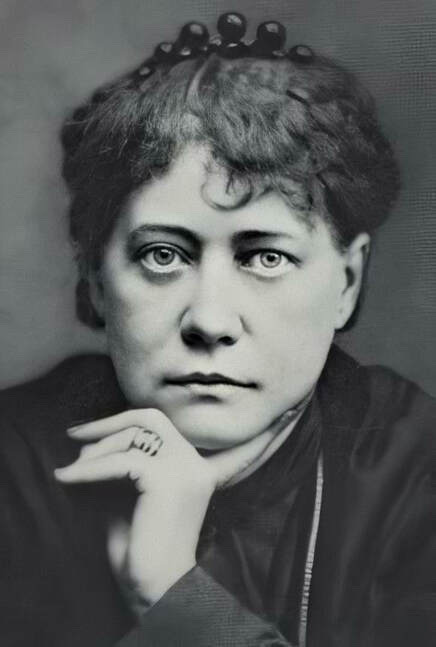
We are initiating a new course on The Voice of the Silence, an ancient manual of esoteric instruction. This work was translated by the eminent Helena Petrovna Blavatsky, founder of the Theosophical Society, whose scholarly and spiritual achievements cannot be easily estimated. This brief mystical text is a collection of fragments from The Book of the Golden Precepts, an obscure and rich scripture from which The Secret Doctrine was inspired.
The Voice of the Silence was not fully translated, since it would have required Blavatsky many years just to organize her documents, let alone translate the work in its totality. She also mentioned that much of this scripture is too sacred and profound to be understood by her students. This is a powerful statement, one that should not be overlooked. This guide, she said, is for serious practitioners who are awakening consciousness.
Although The Voice of the Silence is brief, it is dense, and therefore difficult to interpret. As with any deep work, it requires an awakening consciousness to decipher, apply, and realize. Despite the brevity of this work, it synthesizes the entire path to liberation. This is no small feat.
The origins and translation of this work has often been contested and disputed. However, the Panchen Lama affirmed its authenticity. In case you do not know, the Panchen Lama is second in command to the Dalai Lama within the Gelug school of Tibetan Buddhism. As he stated in 1925:
It is the “only true exposition in English of the Heart Doctrine of the Mahayana and its noble ideal of self-sacrifice for humanity.” ―The Panchen Lama (1925)
#gnosis#gnosticism#spirituality#meditation#awakening#consciousness#gnostic#spiritual#chicago gnosis#samael aun weor#gnostic academy of chicago#kabbalah#alchemy#psychology#spiritual psychology#mysticism#voice of the silence#how to meditate#meditation podcasts#spiritual podcasts#helena blavatsky#theosophy#tibetan buddhism#buddhism#christianity#gnostic christianity#esoteric christianity#bodhisattva#mahayana#tantra yoga
37 notes
·
View notes
Text
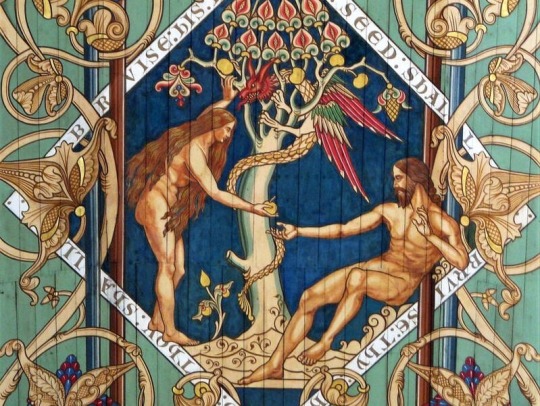
Spiritual life is realized through comprehending and overcoming temptations. Rather than avoid challenges that lead to genuine growth, serious practitioners can take advantage of the worst situations to catalyze their awakening. Both the kabbalistic and gnostic traditions describe this process through mastering five types of soul. They also clarify that such qualities have to be created, developed, and perfected through practical works. Learn how through a gnostic scripture called “The Reality of the Rulers," an alternative narrative of the Garden of Eden.
#gnosis#Gnostic#gnostic bible#gnostics#gnostic kabbalah#spirituality#gnosticism#gnostic gospels#gnostic teachings#gnostic christianity#gnostical#gnostic academy of chicago#chicago gnosis#chicago gnosis podcast#samael aun weor#spiritual knowledge#spiritual#gnostic spirituality#esoteric knowledge#esoteric christianity#esotericism#religion#religions#jewish mysticism#mysticism#mystical#garden of eden#consciousness#awakening#temptation
45 notes
·
View notes
Text

The Nativity is a cosmic event of tremendous import, not merely in terms of literal history, but psychological and spiritual development. It reveals a universal phenomenon: how a properly prepared individual can give birth to and realize their own divine being upon the initiatic path, thereby providing profound benefit to humanity. Discover the hidden symbolism behind Christmas: Santa and his reindeer, kissing under the mistletoe, the Christmas tree, the Three Magi, the Immaculate Conception, gift-giving, and more.
https://chicagognosis.org/lectures/christmas-the-birth-of-the-inner-savior
#gnosticism#gnosis#gnostic academy of chicago#chicago gnosis podcast#chicago gnosis#gnostic teachings#gnostic tradition#spirituality#awakening#consciousness#gnostic#spiritual#samael aun weor#intimate christ#inner christ#christ’s will#gnostic christianity#esoteric christianity#christian doctrine#christianity#christian faith#christmas#christian tradition#meditation#spiritual podcasts#spiritual exercises#spiritual path#spiritual enlightenment#spiritual awakening#divine wisdom
13 notes
·
View notes
Text
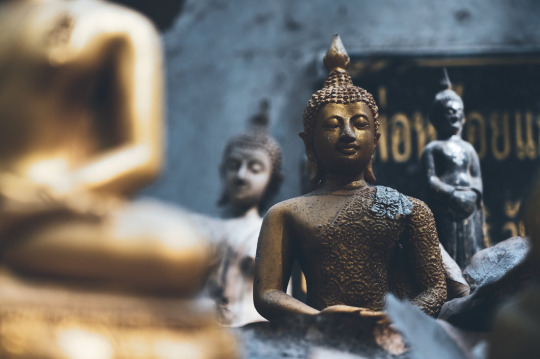
The Voice of the Silence: The Great Perfections
Learn the principles, laws, or qualities of the soul as explained within Christic Buddhism:
1. DANA, the key of charity and love immortal.
2. SHILA, the key of Harmony in word and act, the key that counterbalances the cause and the effect, and leaves no further room for Karmic action.
3. KSHANTI, patience sweet, that nought can ruffle.
4. VIRAG, indifference to pleasure and to pain, illusion conquered, truth alone perceived.
5. VIRYA, the dauntless energy that fights its way to the supernal TRUTH, out of the mire of lies terrestrial.
6. DHYANA, whose golden gate once opened leads the Narjol toward the realm of Sat eternal and its ceaseless contemplation.
7. PRAJNA, the key to which makes of a man a god, creating him a Bodhisattva, son of the Dhyanis. ―The Voice of the Silence
The final lecture of this course explains the Paramitas or Perfections of Mahayana Buddhism in relation to the Christic teachings: the fundamental principles in which a bodhisattva of compassion develops. Through the paramitas, the master sacrifices him or herself for humanity while developing bodhichitta: compassion for humanity and insight into the abstract nature of reality: the profound and limitless emptiness of the Absolute within Hebraic Kabbalah.
#gnosticism#spirituality#gnosis#awakening#meditation#consciousness#gnostic#spiritual#chicago gnosis#samael aun weor#gnostic academy of chicago#gnostic teachings#gnostic tradition#esoteric christianity#tibetan buddhism#tantric buddhism#mahayana#bodhicitta#bodhisattva#religion#religions#mystical experiences#mysticism#mystical#mystics#esoteric knowledge#helena blavatsky#scripture#chicago gnosis podcast#meditation podcasts
18 notes
·
View notes
Text
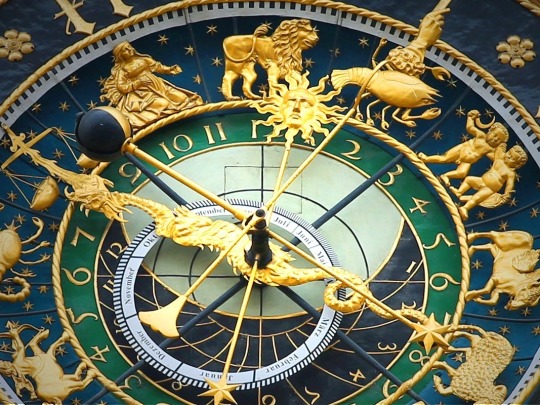
Celebrate the Aquarian New Year this February 4th by investigating, meditating upon, comprehending the path of the Perfect Matrimony.
#gnosis#gnosticism#gnostic#chicago gnosis#chicago gnosis podcast#gnostic academy of chicago#gnostical#gnostic tradition#gnostics#gnostic teachings#gnostic christianity#samael aun weor#samael#spirituality#awakening#aquarius#age of aquarius#new year#spiritual#spiritual life#spiritual awakening#consciousness#meditation#spiritual podcasts#spiritual podcast#tantra#alchemy#kabbalah#esoteric astrology#astrology
8 notes
·
View notes
Text
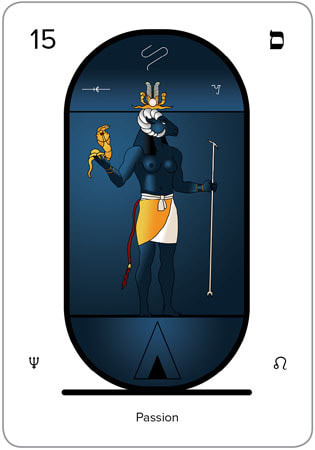
There are many misunderstandings about what the devil is. Religion, which has been sterilized of any genuine meaning, has become a caricature which people either adulate or reject, a type of mythology that people are fascinated with but who do not comprehend its genuine meaning. This type of subject is very thorny, especially amongst Jews, Christians, and Muslims. But today we will talk about the genuine role of the devil, what diablo is, who is the tempter that every initiate on the path of the bodhisattva must face in order to conquer him or herself.
Many people have psychological traumas associated with religion, especially due to a poor miseducation growing up in Catholic school, learning about this demonic figure in red with horns and a pitchfork and a tail, which is ridiculous to atheists, and for which we agree, because that type of depiction of שָׂטָן shaitan, which is Hebrew for “adversary,” does not have any real meaning. People think that this figure is external to oneself, failing to realize that these are symbols. These are archetypes. These are principles.
People fail to see the practical symbology of these myths, the purpose of the tempter. Without temptation there is no light. We must learn to face great ordeals given to us by divinity in order to conquer ourselves.
#tarot ritual#tarotreading#tarotcards#tarot readings#free tarot#daily tarot#tarot deck#tarot reading#tarot cards#tarot#tarotblr#tarotcommunity#tarot witch#tarot conversations#tarot community#tarot course#tarot club#tarot related#gnostic academy of chicago#chicago gnosis podcast#samael aun weor#samael#gnosticism#gnosis#gnostic#chicago gnosis#spiritual#spirituality#esoteric knowledge#demon art
9 notes
·
View notes
Text
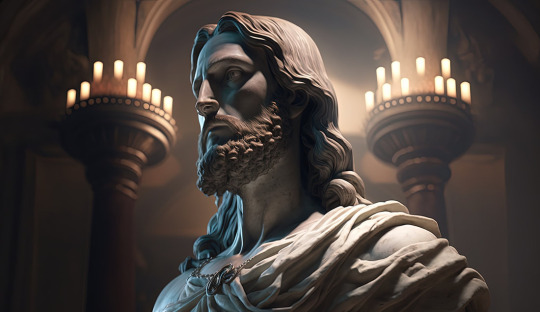
Many spiritual devotees preach about the need to love. However, what many lack is the knowledge how. Compassion must be balanced with wisdom, otherwise it can fall into complacency with crime. Likewise, wisdom without love is impractical, inapplicable to the problems of daily living. Genuine spirituality is therefore based on facts and direct, conscious experience. Discover how the ancient mystical traditions, primarily Christianity and Buddhism, explain what enlightened compassion signifies: how to apply intuitive insight to the complexities of being, so as to cut through suffering and arrive at comprehension, even when it is severe.
#gnosticism#gnosis#gnostic tradition#gnostic teachings#gnostics#gnostic#gnostic christianity#spirituality#awakening#meditation#consciousness#chicago gnosis#samael aun weor#gnostic academy of chicago#chicago gnosis podcast#spiritual#religion#esoteric christianity#christianity#christian doctrine#tibetan buddhism#buddhism#conscious living#living mindfully#mindful meditation#mindfulness#mindset#how to meditate#clarity#insights
7 notes
·
View notes
Text

In a world of increasing perplexity, hatred, and confusion, it is even more imperative to return to the ancient spiritual traditions for guidance. The genuine mystics have always provided an ethical and moral compass for navigating adversity, albeit their message has been veiled except through direct experience of fundamental principles. Fortunately, Christianity, Buddhism, and Sufism offer profound insights into the nature of divine compassion: selfless love enlightened by clear perception. By awakening our ability to perceive and understand, we arrive at deepened serenity and the wisdom to transform suffering despite its rising intensity.
#gnosticism#gnosis#gnostic tradition#gnostic academy of chicago#gnostic kabbalah#gnostic teachings#esoteric christianity#tibetan buddhism#buddhism#spirituality#awakening#meditation#consciousness#gnostic#chicago gnosis#samael aun weor#spiritual#helena blavatsky#theosophy#the voice of the silence#esoteric knowledge#spiritual path#spiritual enlightenment#spiritual growth#mysticism#mystical#mystical experiences#religion#religions#divine knowledge
9 notes
·
View notes
Text

Nietzsche: On the Three Metamorphoses
(Note: the Old Iranian root of the name Zarathustra comes from: Zarat, "golden" combined with ushtra, "camel." This is significant for understanding this passage. Gnostic exegesis is provided in parentheses.)
Of three metamorphoses of the spirit I tell you: how the spirit becomes a camel; and the camel, a lion; and the lion, finally, a child.
There is much that is difficult for the spirit, the strong reverent spirit that would bear much (karma through initiation): but the difficult and the most difficult are what his strength demands.
What is difficult? asks the spirit (of the neophyte) that would bear much, and kneels down like a camel (ushtra in Old Iranian, גמל Gamal in Hebrew) wanting to be well loaded (to take upon itself the bitter path of initiation). What is most difficult, O (solar) heroes, asks the spirit that would bear much, that I may take it upon myself and exult in my (sexual) strength (און aun)? Is it not humbling oneself to wound one's haughtiness? Letting one's folly shine to mock one's (false) wisdom?
Or is it this: parting from our cause when it triumphs (Sattvic action mentioned in the Bhagavad-Gita)? Climbing high mountains (of initiation) to tempt the tempter (Christus-Lucifer)?
Or is it this: feeding on the acorns and grass of knowledge (דעת da'ath, gnosis) and, for the sake of the truth, suffering hunger in one's soul (like Tantalus awaiting the solemn banquet of the Pascal Lamb)?
Or is it this: being (psychologically) sick and sending home the comforters (by not seeking spiritual advice from others, but delving into profound meditation in order to receive wisdom within) and making friends with the (spiritually) deaf, who never hear what you want?
Or is it this: stepping into filthy waters (in transmutation) when they are the waters of truth (poisoned by fornication as mentioned in "On the Rabble" in Part Two of Thus Spoke Zarathustra), and not repulsing cold frogs and hot toads? (This signifies not running away from our own internal, psychological ugliness that we begin to perceive when working with the "hot" and "cold" synpathetic cords of our spinal column, the solar and lunar energetic channels known as Ida and Pingala, which come from our waters, wherein reside the frogs and toads, symbolic of the fertility of Yesod).
Or is it this: loving those who despise us and offering a hand to the ghost (our Innermost) that would frighten us? (since our animal mind is terrified before the presence of the divine; in Hamlet by William Shakespeare, Claudius, the ego, has slain the King of Denmark, and now the ghost of the dead king, the Intimate Being, haunts our very souls through intense spiritual inquietudes).
All these most difficult things the spirit (of the neophyte) that would bear much takes upon itself: like the camel (ushtra) that, burdened, speeds into the desert (מִּדְבָּר Hebrew: mid'bar), thus the spirit (of the neophyte) speeds into its desert (for in the מִּדְבָּר wilderness, the desert of life, we work to incarnate and worship the Word, דָּבָר Dabar, the Christ; see Exodus 3:18).
In the loneliest desert, however, the second metamorphosis occurs: here the spirit becomes a lion (from the Tribe of Judaea through the Venustic Initiation) who would conquer his freedom and be master in his own desert (his מִּדְבָּר mid'bar by incarnating דָּבָר Dabar, the Word). Here he seeks out his last master (the black psychological moon, Lilith): he wants to fight him and his last god (the dragon of darkness of our atomic psychological infernos mentioned by Samael Aun Weor in The Three Mountains); for ultimate victory he wants to fight with the great dragon.
Who is the great dragon whom the spirit (of Christ in the Venustic Initiation) will no longer call lord and god? (for "Thou shalt have no other אֱלֹהִים Elohim, gods, before me." -Exodus 20:3). "Thou shalt" is the name of the great dragon (for our own animal ego takes the commandments, the Law of Moshe, and subverts it for itself; it abuses the law and seeks to make us slaves of Egypt, מצרים Mitzraim, Malkuth). But the spirit of the lion (of the Tribe of Judah, the Cosmic Christ) says, "I will" (or we can say, Eheieh Asher Eheieh אהיה אשר אהיה, "I AM THAT I AM," better translated as "HE IS WHAT HE IS"). "Thou shalt" lies in his way, sparkling like gold, an animal covered with scales; and on every scale shines a golden "thou shalt" (resembling the golden calf of Moloch, mentioned in Exodus 32, and his tenebrous agents of darkness who strive to tempt and slay the Superman).
Values, thousands of years old, shine on these scales (with false, diabolic light); and thus speaks the mightiest of all dragons: "All value of all things shines on me. All value has long been created, and I am all created value (through fornication). Verily, there shall be no more 'I will ( אהיה Eheieh, I AM, or better said, HE IS).'" Thus speaks the dragon (of darkness).
My brothers, why is there a need in the spirit for the lion? Why is not the beast of burden (the initiate who has not incarnated the Lion of Christ), which renounces (self-will) and is reverent (to the Law of Moses), enough?
To create new values—that even the lion (the Bodhisattva of the Straight Path) cannot do; but the creation of freedom for oneself for new creation—that is within the power of the lion (for the acquisition of Mastery is one thing, but perfection in it is another; see the Three Wise Men or Magi in The Gnostic Nativity of Christ). The creation of freedom for oneself (through the First Law of the Glorian) and a sacred "No" even to duty (the written commandments or Second Law: Deuteronomy)—for that, my brothers, the lion (the Bodhisattva) is needed (since only Christ incarnated within the initiate can perform the Great Work by transcending the Second Law). To assume the right to new values—that is the most terrifying assumption for a reverent spirit (the neophyte or initiates who have not yet become lions of Judaea). Verily, to him it is preying (immorality, since the neophytes do not comprehend the Path of the Bodhisattva, the Rebel Christ), and a matter for a beast of prey (who renounces and annihilates the morals of the populace). He once loved "thou shalt" as most sacred (because before incarnating the First Law, one must follow the Second Law): now he must find illusion and caprice even in the most sacred (for he once followed the Second Law, but now must incarnate the Revolutionary Christ, Who transcends the Second Law), that freedom from his love (psychological attachments) may become his prey: the lion is needed for such prey (since only Christ, the First Law, can annihilate the entirety of the ego on the Second Mountain).
But say, my brothers, what can the child (of the Resurrection) do that even the lion (Bodhisattva of compassion) could not do? Why must the preying lion (the warrior of the Straight Path) still become a child? The child (of the Resurrection) is innocence and forgetting (through purification and the waters of Lethe; see also Matthew 18:3), a new beginning, a game, a self-propelled wheel (Sanskrit: chakra, which now turns through the bhava, the becoming, of אהיה אשר אהיה Eheieh Asher Eheieh, "I AM HE WHO BECOMES," "I AM HE WHO INITIATES," see the Bhavachakra course), a first movement, a sacred "Yes." (As Samael Aun Weor stated in Igneous Rose, "Our Innermost is Yes, Yes, Yes. The wisdom of our Innermost is Yes, Yes, Yes. The love of our Innermost is Yes, Yes, Yes.") For the game of creation (as a Cosmocreator), my brothers, a sacred "Yes" is needed (we need our Innermost to be realized within ourselves through Resurrection): the spirit (Kether, upon Resurrection) now wills his own will (for תפארת Tiphereth is united with the will of the Father, for אהיה אשר אהיה "HE IS WHO HE IS"), and he who had been lost to the world (through initiation) now conquers his own world (through Resurrection).
Of the three metamorphoses of the spirit (through initiation) I have told you: how the spirit became a camel (a neophyte on the path of renunciation); and the camel, a lion (of Judah, a Bodhisattva of Compassion); and the lion, finally, a (golden) child (of Alchemy and the Resurrection—golden in Old Iranian is Zarat, which when combined with ushtra, the camel of the renunciate, is Zarathustra).
Thus spoke Zarathustra (the golden camel who traverses the wilderness in order to become a Superman). And at that time he sojourned in the town that is called The Motley Cow (the sacred Hindustani symbol of the Divine Mother Kundalini).
From Thus Spoke Zarathustra: A Book for All and None, translated by Walter Kaufmann.
#frederick nietzsche#nietzsche#friedrich nietzsche#nietzscheism#nietzschean#nietzsche quotes#kabbalah#gnostic kabbalah#alchemy#gnosis#gnosticism#gnostic#chicago gnosis#samael aun weor#gnostic academy of chicago#initiation#spiritual initiation#spirit#spirituality#philosophy#existentialism#spiritual transformation#esoteric knowledge#awakening#consciousness#spiritual#divinity#chicago gnosis podcast#philosophical#spiritual path
14 notes
·
View notes
Text

Get spiritual help from Melchizedek this Saturday, January 13th at the 13th hour:
#gnosticism#gnosis#gnostic#chicago gnosis#samael aun weor#samael#gnostic academy of chicago#gnostic ritual#gnostic kabbalah#gnostic tradition#gnostic bible#gnostic teachings#gnostic christianity#gnostics#meditation practice#meditation#meditations#how to meditate#how to pray#spiritual#spirituality#practical spirituality#awakening#consciousness#mystical experiences#melchizedek#bible#bible scripture#holy bible#esoteric christianity
5 notes
·
View notes
Text
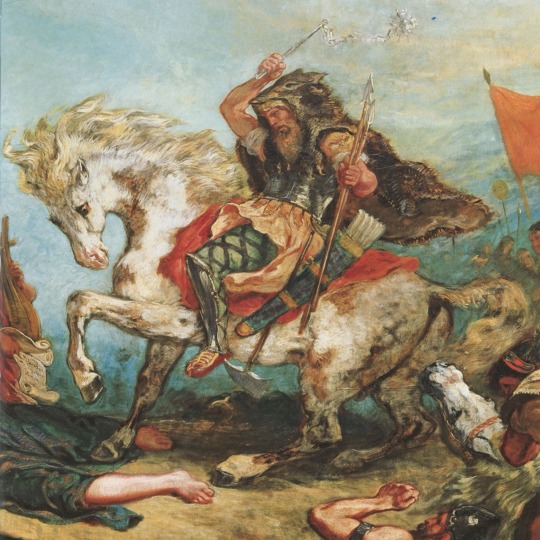
The Secret Teachings of Opera: Attila (Prologue)
Giuseppe Verdi was a Freemason who encoded the spiritual path of kabbalah, alchemy, and initiation in his operas. In this seminal work, Attila—the warrior of the spirit—must conquer the kingdom of Rome (amore, love) within himself for the redemption of the psyche. However, his pride, anger, and ego are very alive. All defects must die for the spiritual master Attila (Thelema, divine will) to become perfect. Discover what happens to a warrior bodhisattva, an incarnation of the Martian Christ, upon taking the direct path to the Absolute, the contexts, requisites, obstacles, and dramas symbolized in Attila's choice to conquer Rome.
#verdi#giuseppe verdi#gnosis#gnosticism#spirituality#gnostic#chicago gnosis#samael aun weor#samael#opera#classical music#attila#attila the hun#kabbalah#alchemy#spiritual initiation#initiation#gnostic academy of chicago#mars#ares#ares deity#spiritual warrior#spiritual warfare#warrior#warriors#mysticism#jewish mysticism#freemasons#freemasonry#freemasonic
11 notes
·
View notes